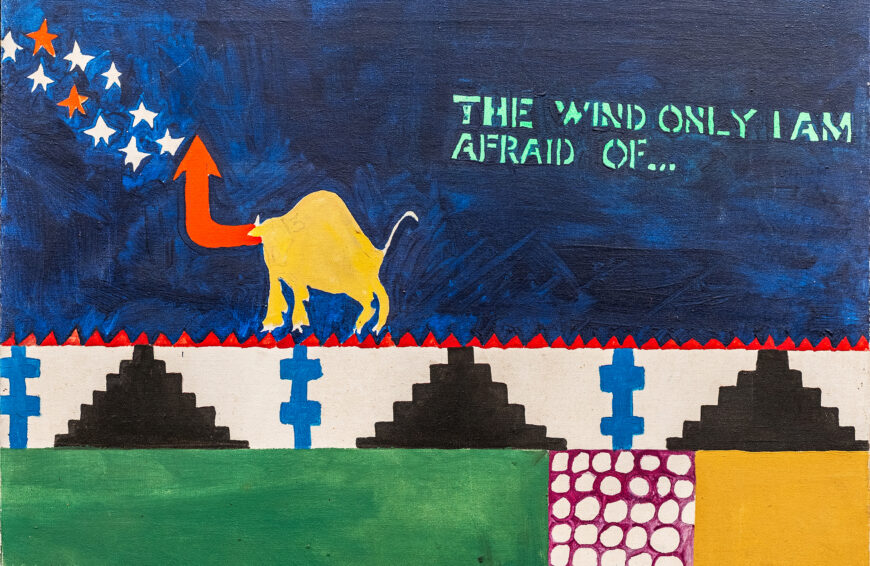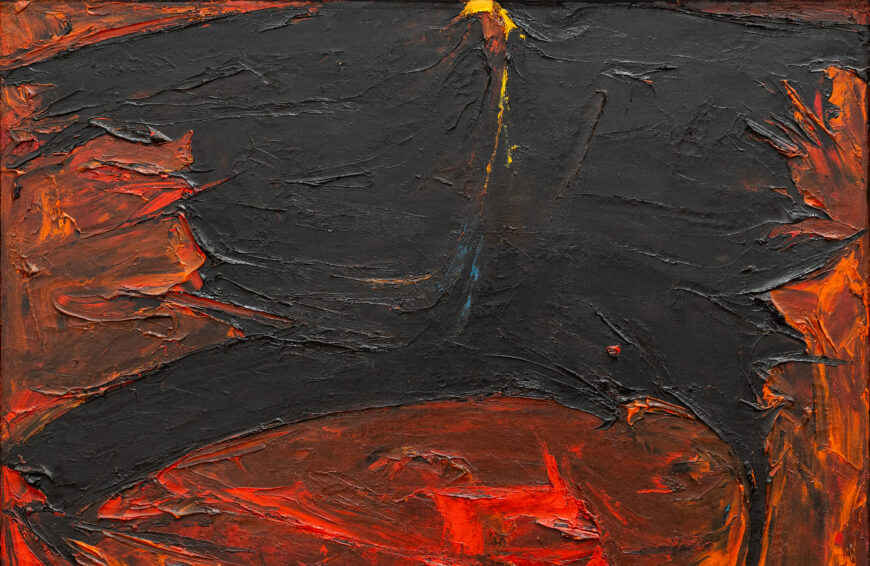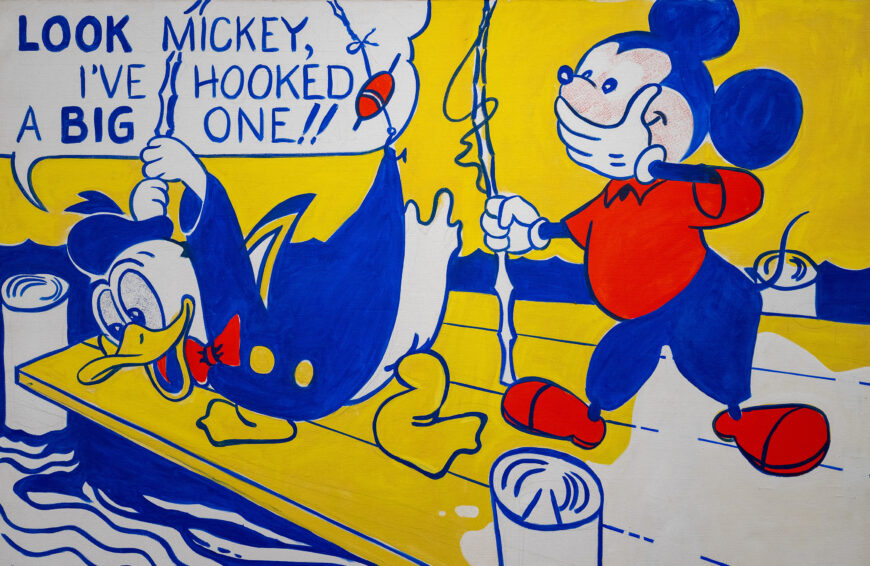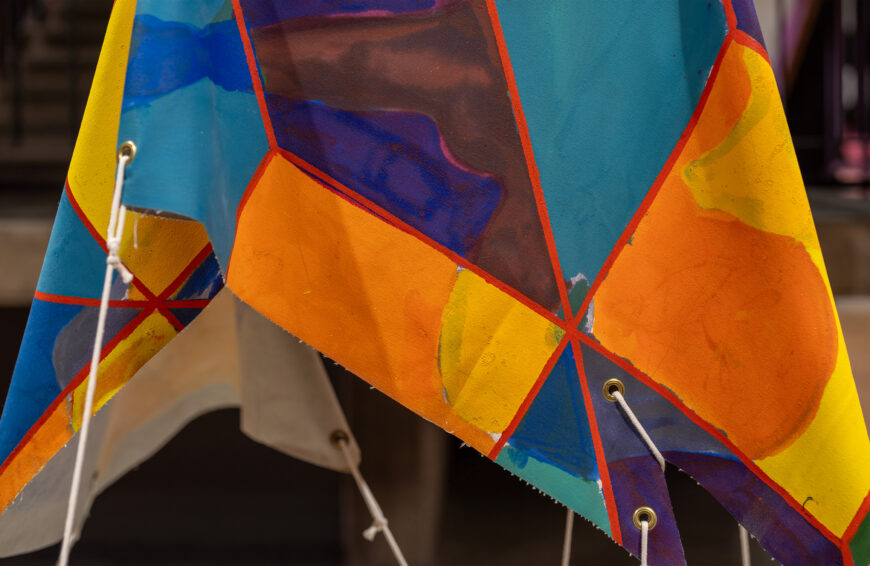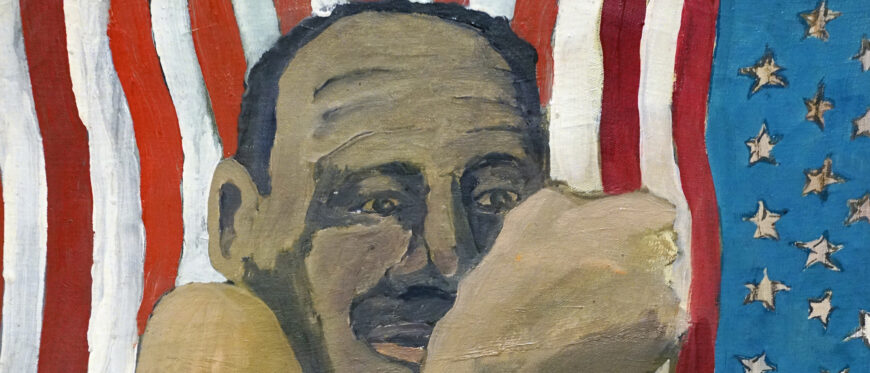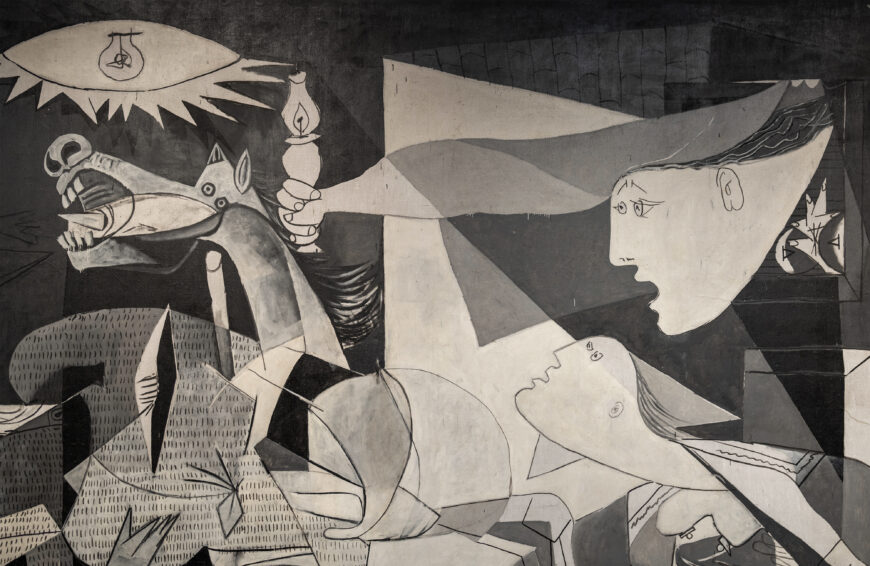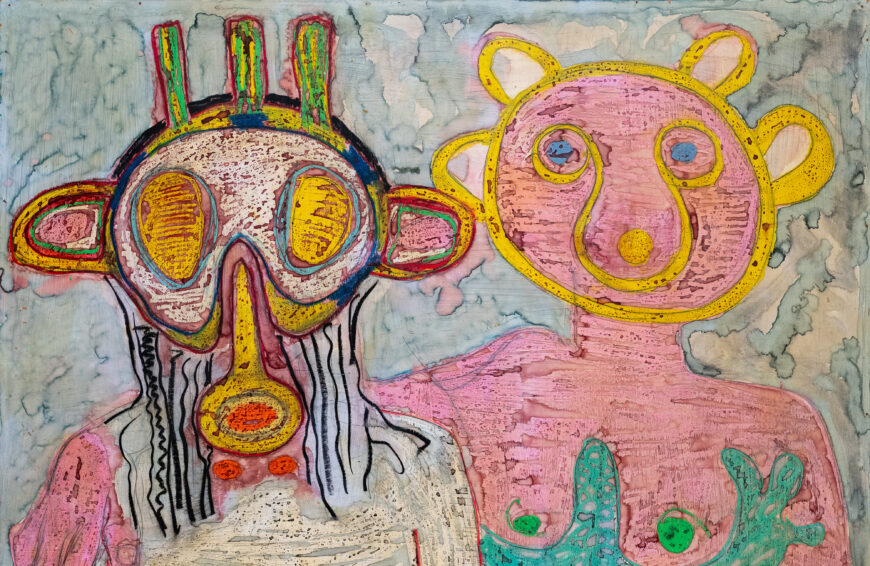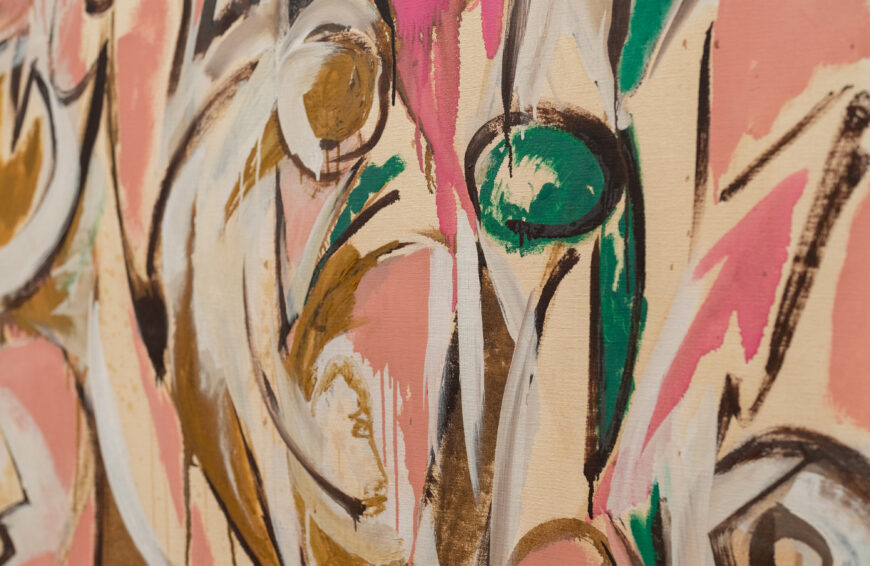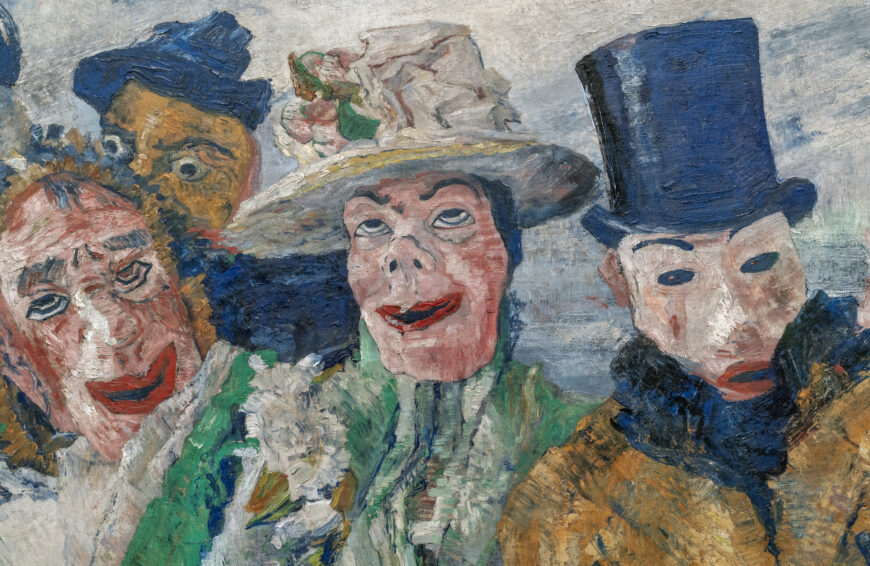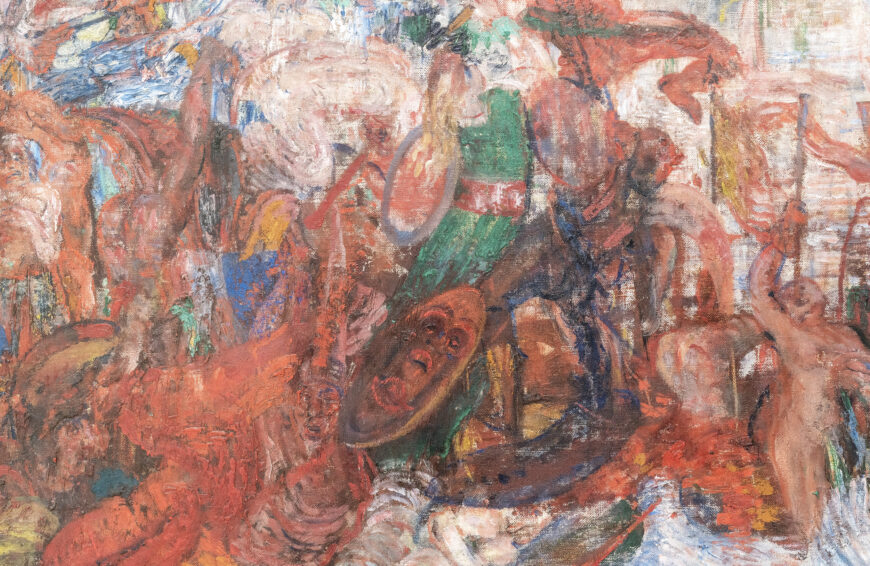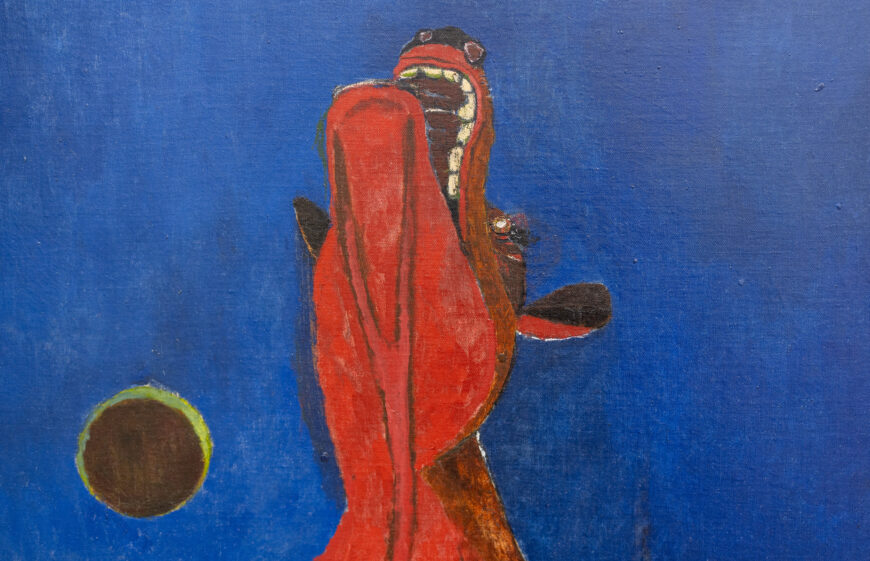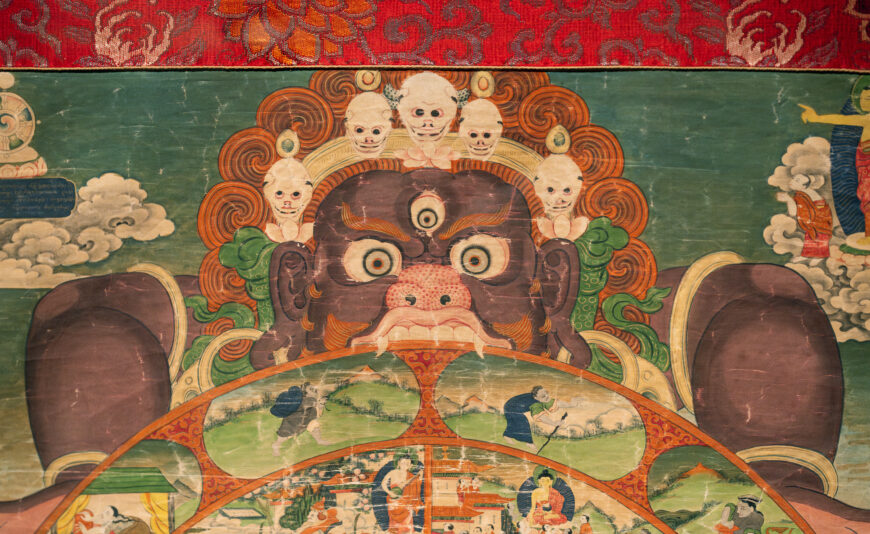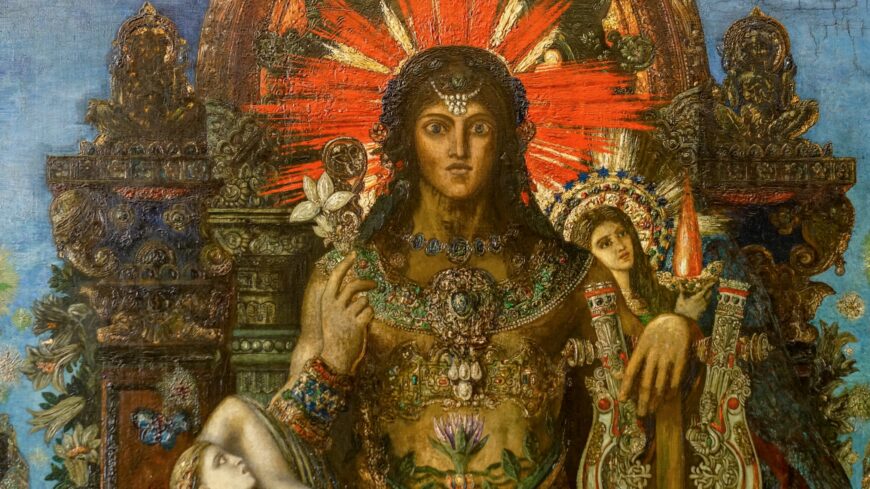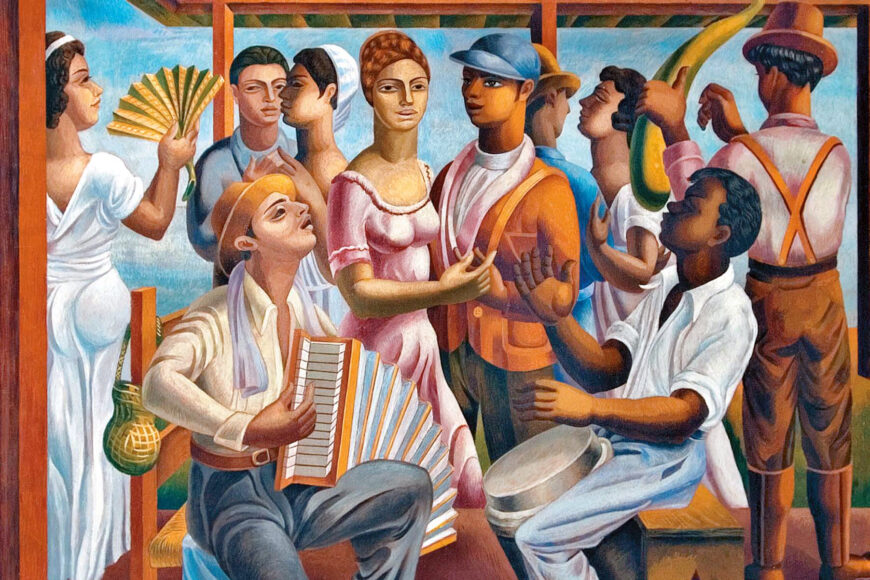Georges Braque, Le Viaduc à L’Estaque, (The Viaduct at L’Estaque), 1908, oil on canvas, 28-5/8 x 23-1/4″ / 72.5 x 59 cm (Musée national d’art moderne, Centre Pompidou, Paris)
Georges Braque, Le Viaduc à L’Estaque, (The Viaduct at L’Estaque)
[0:00] [music]
Dr. Steven Zucker: [0:06] We’re in the Pompidou in Paris, and we’re looking at a Georges Braque. It’s an early Braque. It was painted just after Cézanne died. Braque went down to L’Estaque, in almost a kind of homage, [and] began to sort of work through Cézanne’s style in his late paintings.
Dr. Beth Harris: [0:21] You can see the viaduct that you see in many Cézanne paintings, and the same palette that you see in Cézanne, and that same kind of hatching brushwork that you see also in Cézanne, but things have changed. Braque has seen the “Les Demoiselles d’Avignon.” The space is really compressed.
Dr. Zucker: [0:40] His meeting Picasso and seeing how Picasso is in a sense filtering Cézanne, not to mention other artists, including Matisse at this point, is having an impact here. It’s these paintings that Braque is bringing back that Picasso sees, that really pushes Picasso forward.
[0:56] You were talking about a compression. That bridge wants to be in the background, but it also pushes forward in some really aggressive ways, and the sky above it seems to push forward even more in some ways, so that the entire canvas seems to crest up and towards us.
Dr. Harris: [1:11] And the buildings in the foreground seem to, in a way, crest up and back, so that the viaduct in the background and the houses, it feels like there’s no middle ground.
Dr. Zucker: [1:21] Right, so how does he pull that off?
Dr. Harris: [1:23] I see a lot of reduction to geometric forms. I see rectangles and triangles and pyramid shapes and semicircular shapes, almost as though the houses look like mountains, and the mountains look like houses and the trees look like the sky. It’s hard not to see this through the lens of the dissolution of form that’s going to happen with Analytic Cubism.
Dr. Zucker: [1:48] The colors are very much the colors of Analytic Cubism, grays and brown. You’ve got the gray-blues up at the top, you’ve got the gray blues in the shadows down below. You’ve got those beiges and browns and reds throughout. There’s real continuity across the surface of the canvas, just articulating the surface.
Dr. Harris: [2:05] You also have those kinds of eliding of forms that you see slightly later on in Analytic Cubism, where the roof, that horizontal roof there with the ochres and the golds in it, kind of slips down if you follow the color into another golden side of the roof. There’s no real distinction there in space.
[2:25] Also, that way that you get sort of modeling with some black outlining, very much again, Analytic Cubism.
Dr. Zucker: [2:33] So that kind of eliding of one form to another, something that’s seen as a key characteristic of Cézanne and is often referred to in his work as passage. The way in which it opens up the geometry of that structure.
[2:45] We were talking a moment ago about the nature of surface and the presence of surface here. It’s not just from the brushstroke. It’s not just from the overall color. It’s also from the arbitrary. Look at the green brushstrokes on the center left, or look at the beige brushstroke that’s in the upper right. These are reminders that we’re looking at a two-dimensional surface, this refusal of space.
Dr. Harris: [3:05] It almost feels a little bit to me like that’s Braque’s lesson from Fauvism, those touches of paint that somehow can be separate from what he’s representing, too.
Dr. Zucker: [3:18] Right, but here color is not the vehicle.
Dr. Harris: [3:20] It’s true. There’s these random strokes of paint.
Dr. Zucker: [3:23] The whole thing feels so rough, and so…
Dr. Harris: [3:26] And unfinished in a way that Cézanne often feels unfinished.
Dr. Zucker: [3:29] This is an exploration, in no way meant to be a finished thing so much as a step toward.
Dr. Harris: [3:35] And a working through of Cézanne after his death.
[3:38] [music]
| Title | Le Viaduc à L'Estaque (The Viaduct at L'Estaque) |
| Artist(s) | Georges Braque |
| Dates | 1908 |
| Places | Europe / Western Europe / France |
| Period, Culture, Style | Cubism |
| Artwork Type | Painting / Landscape painting |
| Material | Oil paint, Canvas |
| Technique |
Loading Flickr images...


